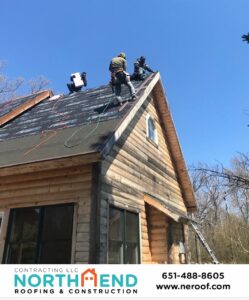
Introduction
A roof is one of the most critical components of your home, providing protection, insulation, and aesthetic appeal. Understanding when it’s time for a roof replacement can save you money and prevent potential damage to your property. In this comprehensive guide, we’ll delve into the key factors that dictate how often you should replace your roof and provide expert insights into maintaining a sturdy, reliable roof.
Factors Affecting Roof Replacement Frequency
1. Material Type
Different roofing materials have varied lifespans. Here’s a breakdown of common roofing materials and their average longevity:
- Asphalt Shingles: Typically last between 20-30 years.
- Metal Roofing: Known for its durability, lasting 40-70 years.
- Wood Shingles and Shakes: Generally have a lifespan of 20-25 years.
- Clay or Concrete Tiles: Can last up to 50 years or more.
- Slate Roofing: One of the longest-lasting options, enduring 75-100 years.
2. Climate and Weather Conditions
Weather plays a significant role in determining how often you might need a roof replacement. Harsh winters, heavy rain, winds, and hail can expedite wear and tear. In St Paul, the frequent climatic changes necessitate periodic inspections to ensure your roof’s integrity.
Signs That You Need a Roof Replacement
The following signs indicate that it might be time to consider a roof replacement:
1. Age of the Roof
If your roof is nearing the end of its expected lifespan, you should start planning for a replacement. Even if it doesn’t show obvious damage, aging materials can fail unexpectedly.
2. Visible Damage
Look for visible signs of damage such as missing, cracked, or curled shingles. Dark streaks or moss growth can also indicate that the roofing materials are deteriorating.
3. Leaks and Water Damage
Water stains on your ceiling, walls, and attic indicate possible roof leaks. Leaks can lead to more significant issues, including structural damage and mold growth.
The Roof Replacement Process
When you decide it’s time for a new roof, understanding the replacement process can help you prepare accordingly. Here’s a step-by-step outline:
1. Inspection and Estimate
Begin with a thorough inspection by a professional St Paul roofing contractor to assess the extent of damage and determine the cost. It’s essential to obtain detailed estimates to plan your budget effectively.
2. Material Selection
Choose the roofing material that best suits your needs, considering factors like longevity, aesthetics, and budget.
3. Removal and Disposal
The old roofing materials are removed and disposed of properly. This stage may reveal hidden issues, such as damaged underlayment or decking.
4. Installation
The new roof installation typically involves laying down a protective layer followed by the new roofing materials. Skilled professionals ensure proper alignment and secure attachment to withstand local weather conditions.
5. Final Inspection
After installation, a final inspection ensures the work meets all safety and quality standards. Your roofer will check for proper sealing and overall integrity.
Choosing the Right Contractor
Selecting a reliable contractor is crucial for a successful roof replacement. Here are some tips:
- Experience and Credentials: Ensure the contractor has extensive experience and proper licensing.
- Local References: A St Paul roofing contractor with positive local references is more likely to understand regional challenges and codes.
- Warranty and Insurance: Opt for contractors who offer warranties on their work and hold comprehensive insurance.
Maintenance Tips for Prolonging Roof Life
Proper maintenance can extend the lifespan of your roof. Here are some expert tips:
- Regular Inspections: Schedule biannual inspections to identify and address minor issues before they escalate.
- Clean Gutters: Ensure your gutters are free from debris to prevent water buildup and potential leakage.
- Trim Overhanging Branches: Trees near your roof can cause damage during storms and allow moss growth.
- Address Repairs Promptly: Quick attention to minor repairs can prevent costly future replacements.
Conclusion
Knowing when to replace your roof is essential for safeguarding your home. Regular inspections, awareness of your roof’s material lifespan, and prompt repairs are key to maintaining its durability. If you’re in need of expert advice or services for Roof Replacement in St Paul MN, North End Contracting is here to assist. Trust our experienced team to deliver high-quality, reliable roofing solutions tailored to your needs.
For residents requiring roof repair in St Paul, choosing a reputable roofer St Paul can make all the difference. Proper care and timely replacements not only enhance your property’s value but also ensure long-term protection and peace of mind.
